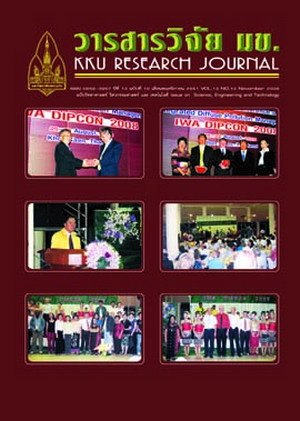Modeling approach on studying the effect of water level fluctuation on belowground Oxygen Dynamics in wetland mesocosms
Main Article Content
Abstract
Direct modeling approaches on evaluating the effect of water level fluctuation on belowground oxygen dynamic is scarce. Therefore, a simultaneous effort on experiment and modeling was carried out to develop, validate and evaluate the effect of water level fluctuation on belowground oxygen dynamics and concentration. Eighteen number of vertical flow wetland mesocosms were designed to have four different systems as static water level systems with plant (SWLP) and without plant-control (SWLC) and fluctuating water level systems with plant (FWLP) and control-without plant (FWLC). They were fed continuously with the synthetic wastewater through an inlet at the bottom and discharged at an outlet just above the substrate surface. In FWL systems, wastewater was drained out every 3.5 days via a port at 50 cm, below the substrate. The experiment was conducted for 240 days and dissolved oxygen (DO) concentrations were monitored at five depths of the substrate, weekly. Numerical models were developed for each system to simulate oxygen diffusion and its related processes, during cycles of each for 3.5 days with four different hydraulic regimes of draining, rising, filling and steady states. The simulation study was carried out for the same experimental period. The model results were compatible with the experimental values at all the cases until the later stage of the experimental period where the temperature at green house went below 15o C, during the winter season. The experimental results showed that the oxygen concentration in fluctuating water level systems (FWL) was 5-32% higher than that in static water level systems (SWL), with a considerable difference particularly at middle layers (27% - 32% higher). Model results on oxygen concentration at five depths of substrate generally agreed with experimental observation and revealed that six-day interval of water level fluctuation created higher efficiency on ammonium and organic carbon removal in terms of oxygen consumption comparing to 2.0 and 3.5day frequencies. Consequently, the experiment could prove the effectiveness of modeling DO variation as an effective technique in deciding the optimized systems for water level fluctuation.
Article Details
How to Cite
Weragoda, S., Trang, T. H., Sasikala, S., Jinadasa, K., Tanaka, N., & Sasaki, Y. (2017). Modeling approach on studying the effect of water level fluctuation on belowground Oxygen Dynamics in wetland mesocosms. Asia-Pacific Journal of Science and Technology, 13(10), 1135–1144. retrieved from https://so01.tci-thaijo.org/index.php/APST/article/view/83501
Section
Research Articles


